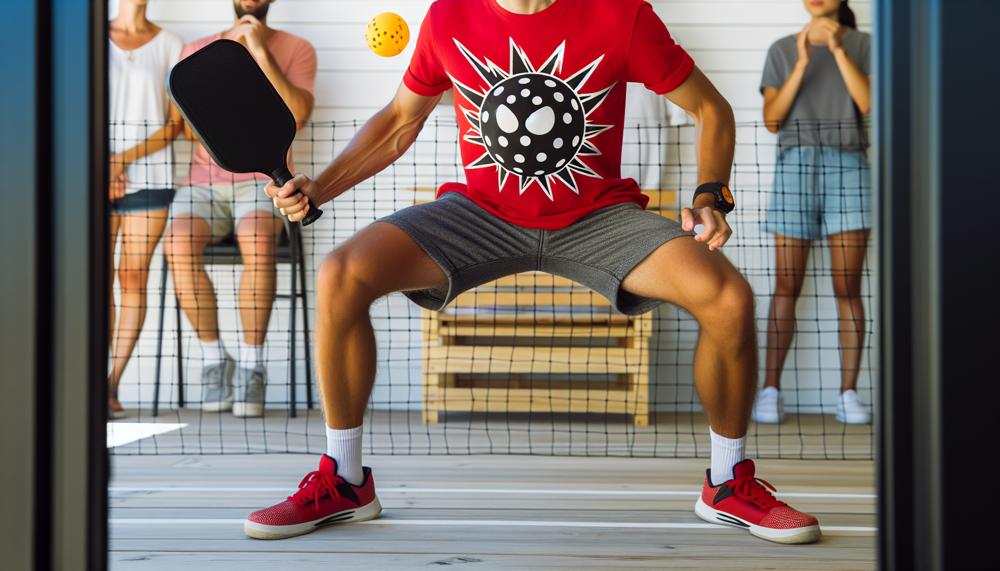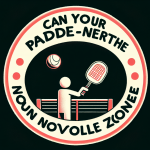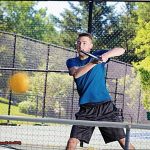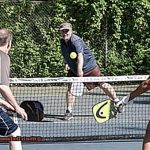Pickleball, the beloved sport that has been gaining immense popularity in recent years for its unique blend of tennis, badminton, and ping pong elements, But have you ever heard of kamikaze in pickleball? This daring tactic is a game-changer for players seeking to elevate their skills and dominate on the court.
Kamikaze in pickleball is a bold and aggressive playing style where a player charges towards the net after serving with the intention of intercepting their opponent’s return shot and putting them on the defensive. This high-risk, high-reward approach requires impeccable timing and lightning-fast reflexes, making it a thrilling move to witness and even more satisfying to execute flawlessly.
In this blog post, we will delve into the concept of kamikaze in pickleball—its origins, advantages, and tips for incorporating it into your game. So whether you’re an experienced pro or just starting out in pickleball, get ready to discover all there is to know about this exhilarating strategy that will take your gameplay to new heights. Let’s dive right in.
Table of Contents
- 1 What Is a Kamikaze in Pickleball?
- 2 Understanding the dynamics of a kamikaze shot
- 3 Developing the skills and techniques for a successful kamikaze shot
- 4 There are different types of shots that can be considered kamikazes in pickleball.
- 5 How to properly execute a kamikaze shot in different situations
- 6 Incorporating kamikaze shots into your overall pickleball strategy
- 7 Conclusion
What Is a Kamikaze in Pickleball?
The term “kamikaze” is often used in the world of pickleball, a popular racket sport. But what exactly does it mean, and how is it executed? In this post, we will explore the purpose of a kamikaze shot and the skills required to execute it.
Similar to its origins in World War II, a kamikaze shot in pickleball involves sacrificing one’s own position on the court to put pressure on the opponent and potentially win the point. This high-risk, aggressive move requires quick reflexes, precise timing, and a strong arm.
So how is a kamikaze shot executed? It involves running towards the non-volley zone, also known as the “kitchen,” and hitting the ball with maximum power and speed as you reach the line. The aim is to catch your opponents off guard, force them into a difficult shot, or give up control of the point. This move can be used both offensively and defensively, adding an element of surprise and excitement to the game.
However, with great risk comes great reward, but also potential consequences. The kamikaze shot requires players to leave their position on the court, making them vulnerable to counterattacks from their opponents. Therefore, it is crucial for players to assess the situation and make a calculated decision before executing a kamikaze.
It’s important to note that this shot should not be used recklessly or frequently. It takes skill and practice to perfect it, and if not executed properly, it can easily backfire and result in losing the point. Thus, players should focus on improving their footwork, timing, and aim before attempting this move in a competitive game.
But what makes the kamikaze shot so popular in pickleball? Apart from its tactical value, it adds an element of excitement and flair to the game. It requires confidence, athleticism, and quick decision-making, making it a thrilling shot to watch and execute.
In conclusion, a kamikaze in pickleball is a high-risk, aggressive shot that involves sacrificing one’s own position on the court to put pressure on the opponent. It takes skill and practice to execute properly, but when done right, it can be a game-changer.
Understanding the dynamics of a kamikaze shot
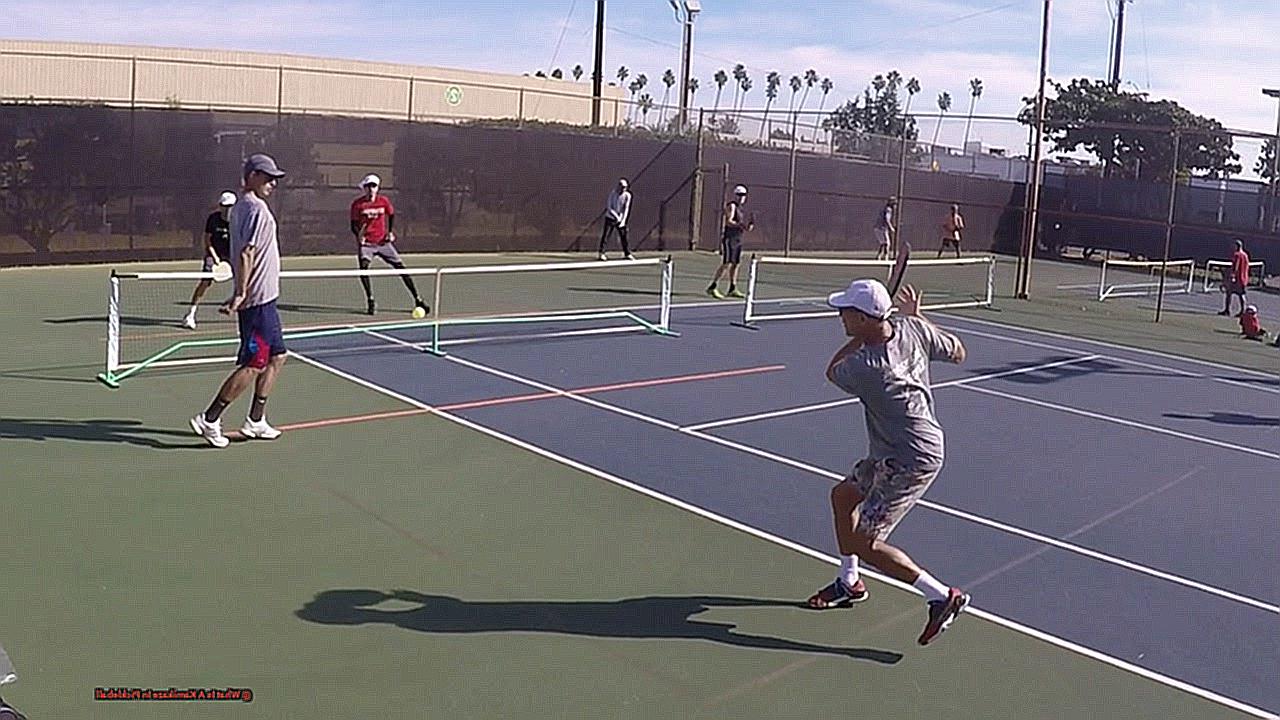
Pickleball, a fast-growing racket sport, has risen in popularity among players of all ages and skill levels. While it may appear to be a straightforward game with a small court, there are various shots and techniques that players can employ to outsmart their opponents and win points. Among these shots, one stands out: the kamikaze shot. But what exactly is a kamikaze shot, and how does it differ from other shots in pickleball?
The Basics of Pickleball Shots
Before delving into the intricacies of a kamikaze shot, it’s essential to understand the basic shots in pickleball. The serve is the most fundamental shot, used to initiate the point. It can be executed in various ways, including underhand or overhand. The lob shot is utilized to reset the pace of the game and force opponents to run backcourt. The dink, on the other hand, is a gentle groundstroke used near the net to make it challenging for opponents to respond with power. And then there’s the third shot drop, a crucial shot that sets up for a strong position at the net.
What makes a kamikaze shot different?
Now that we have a grasp of the basic shots in pickleball, let’s focus on the star of this piece—the kamikaze shot. As mentioned earlier, this shot involves sacrificing one’s own position on the court to put pressure on the opponent and potentially win the point. It requires quick reflexes and precise timing, as it entails hitting the ball around the post.
The kamikaze shot stands out from other shots in pickleball because it’s not just about hitting the ball over the net; it’s about creating an element of surprise and unpredictability for your opponent. This high-risk, aggressive move can catch your opponent off guard and give you an advantage in the game.
Mastering the Kamikaze Shot
While the kamikaze shot may seem like a flashy and uncommon move, it’s a skill that can be honed with practice. It demands a combination of power, precision, and quick thinking. Some players may even incorporate advanced shots like the centerline ace, dink fake, backspin return serve, and around-the-post to add more complexity to their kamikaze shot.
How do I minimize risks and maximize rewards?
To minimize risks and maximize rewards while using the kamikaze shot, it is crucial to practice and develop muscle memory. This shot requires consistent repetition to become ingrained in your game. You can hone your skills by practicing with a partner or a ball machine. It is also vital to assess your opponent’s position on the court before attempting the kamikaze shot. If they are out of position, it may be an opportune moment to surprise them with this advanced move.
Other Advanced Techniques to Consider:
While the kamikaze shot may be a high-risk, high-reward strategy, there are other advanced shots that can elevate your pickleball game. Slice return, topspin, slice drop, dink varieties, and misdirection are all shots that can add complexity and variety to your gameplay. These techniques require practice and consistency to master, but the rewards of using them effectively can give you an edge on the court.
In conclusion, the kamikaze shot in pickleball is an intricate and daring strategy that brings both risks and rewards. As a seasoned pickleball player, I urge fellow players to incorporate this shot into their game, but with caution.
Developing the skills and techniques for a successful kamikaze shot
Mastering the art of the kamikaze shot in pickleball requires a combination of speed, power, precision, timing, and mental fortitude. It is a complex and strategic move that can catch opponents off guard and give players an advantage on the court. To execute this advanced shot successfully, one must possess quick footwork, lightning-fast reaction time, and the ability to adjust their position swiftly towards the net. This requires a high level of speed and agility, which can only be achieved through consistent practice.
In addition to speed and agility, power and control are also crucial for a successful kamikaze shot. Players must be able to generate power while maintaining control over the ball. This requires effective use of wrist and arm muscles, as well as a steady grip on the paddle. Without proper power and control, the shot may fall short or even go out of bounds.
Precision is another vital element of the kamikaze shot. To surprise opponents and gain an advantage on the court, players must aim for specific spots, such as the sidelines or corners. This requires excellent hand-eye coordination, as well as an understanding of angles and trajectories in pickleball. A slight miscalculation can result in a missed shot, so precision is key.
Timing is crucial to executing a successful kamikaze shot. Players must have the ability to judge the speed and spin of the ball, as well as their own positioning on the court. This allows them to hit the ball at the perfect moment with maximum power and control. Without proper timing, the shot may lack its intended force or accuracy.
Lastly, mental toughness is essential for executing a kamikaze shot. It takes courage to take calculated risks on the court and handle the pressure that comes with it. But with mental fortitude, players can surprise their opponents and gain an advantage in the game.
In conclusion, mastering the skills and techniques for a successful kamikaze shot in pickleball takes time, practice, and strategic thinking. With a combination of speed, power, precision, timing, and mental toughness, players can add an element of surprise to their gameplay and achieve victory on the court.
There are different types of shots that can be considered kamikazes in pickleball.
In the game of pickleball, there are various types of shots that can be deemed kamikazes. These shots demand players to take calculated risks, pushing the boundaries of their abilities and causing their opponents to step out of their comfort zone. The perfect execution of these shots requires a delicate balance of power, speed, and precision, making them challenging yet highly effective.
The Erne Shot:
One such kamikaze move is the Erne shot, which entails jumping over the sidelines to hit a volley. This shot demands quick reflexes and impeccable timing in order to jump back onto the court before the ball bounces twice. It is an audacious move, but when executed flawlessly, it can catch your opponent off guard and grant you an advantage in the game.
The Around-the-Post Shot:
Another advanced move is the around-the-post shot, which involves hitting the ball around the net post on either side of the court. This shot requires exceptional precision and timing, as the player must strike the ball at a specific angle to avoid hitting the net post. It is a high-risk shot, but if executed successfully, it can surprise your opponent and earn you a point.
The No-Look Shot:
The no-look shot is a kamikaze move that entails hitting the ball without looking at it. This shot is typically employed as a surprise tactic and can be executed when the ball is approaching from an unexpected angle. It demands excellent hand-eye coordination and confidence in one’s abilities.
The Underhand Smash:
For those seeking an adrenaline rush, the underhand smash is a high-risk shot that involves striking the ball with significant power using an underhand motion. This maneuver can be executed when your opponent hits a high lob or when they are positioned at the net anticipating a dink shot. It necessitates perfect timing and strength for successful execution.
The Fake-Out Shot:
Last but not least, the fake-out shot is a deceptive move that involves feigning to hit one type of shot but altering it at the last second. For instance, one can pretend to perform a dink shot and then deliver a powerful smash to catch their opponent off guard. This shot demands quick thinking and a proficient poker face to pull off effectively.
In summation, kamikaze shots in pickleball require players to take risks and think outside the box. They call for a combination of skill, strategy, and mental fortitude for successful execution.
How to properly execute a kamikaze shot in different situations
This aggressive and high-risk shot can leave both players and spectators in awe when executed correctly. However, mastering it requires careful consideration of various factors. In this blog post, we will delve into the key elements that come into play before attempting a kamikaze shot in pickleball and the diverse ways to execute it in different situations.
What is a kamikaze shot?
A kamikaze shot in pickleball is an explosive and daring shot that aims to end the rally quickly. It involves charging towards the net with tenacity and unleashing a powerful overhead smash. The word “kamikaze,” which refers to suicide missions carried out by Japanese pilots during World War II, comes from the Japanese word for “divine wind.”
Key Factors to Consider:
- Court Positioning: Before attempting this bold move, it’s crucial to have impeccable court positioning. This means being in an advantageous spot on the court and being primed to move swiftly towards the net.
- Opponent’s Positioning: Another critical factor is assessing your opponent’s positioning on the court. If they are off-balance or unable to return the ball effectively, it may be an opportune moment to go for this bold shot.
- Timing: Precision is paramount when it comes to executing a kamikaze shot. You must anticipate the ball’s trajectory and move towards the net with impeccable timing to hit it before it bounces.
- Footwork: Agile footwork is essential for executing a kamikaze shot flawlessly. You need to be light on your feet and get into position swiftly to strike the ball with maximum force.
How to Execute a Kamikaze Shot:
- Forehand or Backhand Drive: The most common type of kamikaze shot is a commanding forehand or backhand drive. To execute this shot, anticipate the ball’s trajectory and dash towards the net. As you approach the net, use your dominant hand to swing the paddle with vigor and swiftness to strike the ball.
- Soft Drop Shot: A kamikaze shot doesn’t always have to be a powerful smash.
Incorporating kamikaze shots into your overall pickleball strategy
Pickleball, the immensely popular sport that blends tennis, badminton, and table tennis, has amassed a massive following in recent years. And with its surging popularity, players are constantly seeking ways to elevate their game and gain an advantage over their opponents.
One strategy that has been generating buzz in the pickleball community is incorporating kamikaze shots into your overall game plan. For those unacquainted with this terminology, a kamikaze shot is a daring and explosive overhead smash aimed at swiftly and aggressively ending the rally.
But how exactly can integrating kamikaze shots into your game enhance your overall pickleball strategy? Let’s delve into some tips and techniques.
Master the Fundamentals of Pickleball Strategy
Before attempting any advanced shots or strategies, it’s essential to have a firm grasp on the basics of pickleball strategy. This includes strategically positioning yourself in the center of the court, utilizing various types of serves, executing low shots, tactfully using the kitchen area, and avoiding impulsive decisions.
Enhance your technique.
To execute a successful kamikaze shot, you must possess strong footwork, quick reflexes, and the ability to master shot techniques. Focus on refining your fundamentals by recording yourself playing, practicing specific shots with a specific goal in mind, soliciting feedback from seasoned players or coaches, and experimenting with new shots.
Play Aggressively
Kamikaze shots revolve around being aggressive on the court. This entails moving forward towards the net, intercepting the ball early before it bounces, taking calculated risks and utilizing spin, and effectively communicating with your partner in doubles play.
Mix up your shots.
Incorporating kamikaze shots into your overall strategy can disrupt your opponent’s rhythm and keep them on their toes. Mix up your shots by combining slower dink shots with powerful kamikaze shots to keep your opponents guessing.
Collaborate with your partner.
In doubles play, communication and coordination with your partner are crucial. Integrating kamikaze shots into your game plan can be even more potent if you and your partner are in sync and can anticipate each other’s moves.
Conclusion
In conclusion, a kamikaze in pickleball is a risky and aggressive shot where the player charges towards the net and slams the ball with full force. This move requires precision, timing, and confidence to execute successfully.
It is a high-risk, high-reward strategy that can catch opponents off guard and lead to winning points. However, it also leaves the player vulnerable to counterattacks if it is not executed properly.

